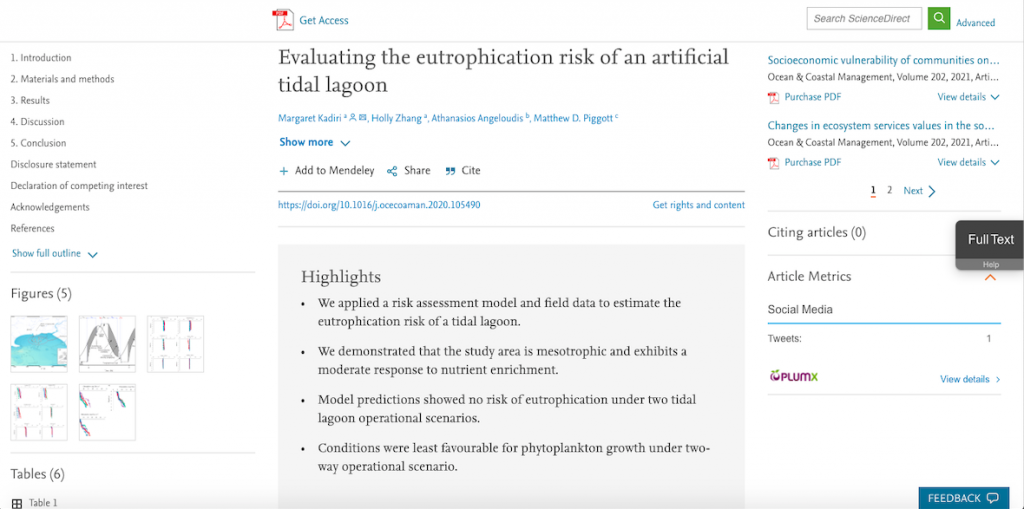
Dr. Margaret Kadiri, Teaching Fellow in Physical Geography at King’s College London, led research on an upcoming article on the eutrophication risk of a tidal lagoon. Her research interests include the nutrient and contaminant cycling in estuarine and saltmarsh environments as well as the hydro-environmental impacts of tidal renewable energy extraction. Dr. Kadiri earned her PhD at Queen Mary, University of London in 2010. To learn more about her upcoming article, read the following abstract:
With increased nutrient inputs to estuaries in recent decades exacerbating their susceptibility to eutrophication, assessment of the response of individual estuaries to nutrient enrichment is attracting considerable attention. Nonetheless, the impact of tidal energy extraction on estuarine nutrient dynamics and the risk of eutrophication has been largely overlooked despite the detrimental consequences of eutrophication on ecosystem functioning. It is understood that tidal energy schemes such as the tidal lagoon previously proposed in Swansea Bay would alter tidal flow characteristics, potentially having knock-on impacts on physical estuarine characteristics and ecological processes in the impounded area. This study examined the existing physical estuarine characteristics in Swansea Bay and evaluated the risk of eutrophication following tidal power plant operation under ebb-only and two-way strategies using a simple risk assessment model. Two surveys were conducted to measure in-situ temperature, salinity, dissolved oxygen, chlorophyll-a, dissolved inorganic nitrogen and turbidity in the water column at 12 sampling stations selected to cover the location in the tidal energy scheme proposal. The water column was found to be nutrient enriched and essentially vertically homogenous with no strong evidence of stratification. High dissolved oxygen, low turbidity and high phytoplankton biomass indicated by the chlorophyll-a concentrations were observed. The bay did not show any signs of eutrophication as the phytoplankton biomass did not reach the level typical of harmful algal blooms and oxygen depletion was not observed indicating that eutrophication is not currently present in the bay. Based on numerical model predictions, the bay was found to exhibit a moderate response to nutrient enrichment with no risk of eutrophication and no net change in its status following the operation of the lagoon under both ebb-only and two-way operational modes. These findings suggest that the management strategies for protecting water quality in heavily modified estuaries such as Swansea Bay may not need to be altered following the operation of a tidal lagoon. But given the conditions for phytoplankton growth are likely to be more favourable under ebb-only operational mode compared to two-way operational mode, measures that control nutrient inputs to the impounded water column within the lagoon should be considered under the ebb-only operational mode as a prudent precautionary step.
